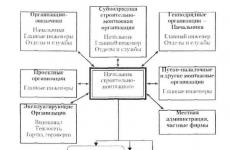How to use anchor bolts. Anchor bolt: description, types, purpose, application, price, marking. These fasteners are divided into groups according to size.
Anchor bolt is a popular fastener, with the help of which they solve the problem of fixing and fixing heavy metal or other structures in the wall. These include prefabricated consoles, hinged products, various partitions, etc. The technology for using such bolts is simple, they differ in GOST standards, shape, type of fastening of the nut, as well as in the content of chemicals and materials in the composition.
Technical classification of anchor bolts
The production and manufacture of all anchors in our market is regulated in accordance with the GOST-24379 standards of 2012. They are made from high-alloy and durable types of industrial steel. This part is a metal rod of various diameters and lengths, the end of which is threaded and has a special fastening in the form of a conical nut.
The basic principle of the anchor bolt is based on it. When the rod enters concrete or other material, the fastener coupling is deformed, resulting in a powerful and durable connection. After screwing in, such fasteners can only be pulled out with a part of the base and with the help of special equipment.
In addition to the types and sizes of anchors, it is customary to divide them according to the method of their fastening. The latter is determined based on specific features and the required nature of the load. Thus, all anchor bolts are distinguished by:
- Option to enter the main material. The most common are screw, drilling, driving, etc.).
- The method of sealing in the immediate place of fixing (expansion, expansion, tubular, etc.).
- Structural features and form. There are cylindrical, conical, solid or prefabricated, rod.
Depending on the last item in the list, anchors are classified into temporary and permanent according to the nature of their action. Reliable fastening and connection of the anchor with one or another material occurs due to friction and stop. Chemical types that contain special fast-curing resins in the capsule are held inside with a powerful adhesive base.

The main technical characteristic of any anchor is its tensile strength. This is a value that is easily calculated by the formula and measured in kN (kilonewtons).
The GOST regulation allows the use of various bolts for fastenings, the "explosive index" of which is more than 10.5 kN.
When calculating the anchors required in terms of shape and degree of action, criteria such as torque and bending moment must also be taken into account. Under the terms of the same GOST, the maximum allowable value is 25 Nm (Newton meters), and the minimum threshold is 5.2 Nm.

Thus, the higher the bending force of the bolt, the stronger its connection to the base. If the construction object goes beyond the established standards, there is an additional classification of anchors, the characteristics of which vary depending on specific indicators according to SNIP 2. 09. 03.
Types of anchor bolts and an overview of their areas of application
Anchors of various shapes and properties are mainly used where there is a need to strengthen structures with a large weight and elements that can move under a certain influence. Such bolts are also successfully used for the foundation, they are used to fasten products with high performance and tensile strength.

Most often, this fastener is used in such cases:
- for strengthening fences, railings, heavy stairs, balconies, building consoles, etc.;
- for attachment to natural stone, concrete or brick wall of various designs;
- when improving fasteners for suspension systems and mechanisms (construction beams, splits, etc.).
Depending on the specific application and shape, all anchor bolts are divided into 2 main types - mechanical and chemical. Both options have their pros and cons, they are used both in a complex and separately from each other.
Mechanical type fasteners - features of popular options
The most versatile and popular type of anchor is a bolt with a hook or a metal ring at the end of the thread. It is used mainly for suspended equipment and materials that are removed from the wall during their operation for repair or replacement (air conditioners, antennas, suspension panels, etc.).
GOST regulates the maximum length of such a bolt, which should not exceed 60 mm. The minimum diameter is 6 mm. A feature of the use of such fasteners is the presence of a nut or a hook at the end of the rod, due to which there is a reliable fixation and clamping inside the base.
Impact anchor (bolt with spacer or foundation and mountain). Another common fastener, which completely lacks a nut and a threaded head. The peculiarity of the bolt is that with dense hammer blows, the stem and tube are wedged, and this leads to a reliable connection. Impact anchors are used mainly for adhesion to a concrete base, if necessary, to hang on it and attach various heavy materials, since the design allows the use of this fastener for any massive objects, including a foundation pit.

"Hidden anchor" with a head. The parameters of its operation are based on the principle of friction force between the base and the conical sleeve, bushing or spring ring. The bolt can also be double-spaced (two heads, bushings or rings), therefore it is able to withstand heavy loads. Most often used for fastening complex and heavy structures to the base of the foundation or walls.

Hexagonal anchor bolt. A feature of the fastener is the head on the rod, which is made in the form of a hexagon. A powerful grip with one or another material occurs due to the friction of the nut, which is located at the bottom. This variety also includes anchors with a "cross-shaped" head. One piece is quite capable of withstanding medium loads, for example, the installation of an antenna.

Frame anchor fastener. The "lightest" version of the bolt, which is used mainly for fastening simple wooden and plastic elements. The custom-shaped head self-levels on the surface, which provides a reliable and durable grip.

Stud for connection with concrete. Anchoring with a bolt of this type occurs due to the presence of two fastening tips. It is screwed in with a conventional nut and is used for hanging heavy structures in the form of canopies, load-bearing consoles, balconies, etc.
Chemical anchors - a powerful alternative for construction
Unlike standard mechanical anchors, in chemical bolts, in addition to the metal base, which creates thrust and friction, there is also an additional substance. With its help, instant bonding occurs inside the base, which leads to a more reliable fixation.

The main advantages of using chemical anchor bolts in construction are:
- versatility. Such a screw is used for both external and internal work;
- resistance to vibration and fluctuations. This indicator allows you to use them for any designs;
- effective application for walls and bases made of thin or "loose" materials. Chemical anchoring is carried out on any surface, including today's popular aerated concrete.

In addition to chemical and standard mechanical options, there are more "highly specialized": mountain, floor, ceiling, facade, spring or ground anchors. They are used much less frequently for specific actions on the construction site, and their production is less efficient.
Instructions for installing fasteners with your own hands
The technology for fastening and installing anchors of a standard type is simple. The first step is to drill a hole in the wall with a drill or puncher. The hole should match as closely as possible with the diameter of the bolt used, so the drill or drill is selected based on these data.

All well-known manufacturers of this fastener produce their products in accordance with accepted standards, which makes it easy to choose the necessary element for proper drilling. Be sure to calculate the specified length of the product, since it is very difficult to pull out both the mechanical and chemical anchors with incomplete tightening, and it will leave only with part of the finish and the wall.

After drilling, the resulting hole is purged from the collected dust and dirt. It is most convenient to do this with a professional construction vacuum cleaner. The anchor should not go in easily, it is best to drive it in with tight blows of a hammer or sledgehammer for a more reliable and high-quality fastening.
The nut is tightened to the stop, which allows the tapered rod to wedged out correctly inside the concrete or other stone base. Next, unscrew the pebbles, install the necessary material on the rod and twist it back as tightly as possible with a wrench or ratchet.

This instruction is also relevant for chemical anchors, but they are usually wider due to the presence of a special filler inside the glass (solid), which should also be taken into account during installation. Be careful with this type of anchor, when it falls, it breaks, releasing toxic substances that should not get on the skin, clothing, etc.
What is an anchor, types of anchors.Is it worth nailing something to a concrete wall? Or are there any more effective ways of fastening? These and other questions will be answered by this article, which tells about the actual fasteners - anchors, let's figure out what an anchor is and what types of anchors are. The range of anchors on the market is represented by an innumerable variety of different modifications, for example:
- wedge anchor KA;
- drop-in anchor LAH;
- rod anchor RU;
- rod-shaped anchor TA;
- screw anchor RA;
- embedded anchor SORMAT, DRIVA;
- brass anchor MSA;
- anchors MTA, KVTM, PFG, OLA, and so on.
When carrying out finishing, repair, or construction work, it is impossible to do without fasteners. These can be screws or nails, that is, devices that themselves, without any additional parts, are able to fasten materials and withstand the corresponding load. They can be applied to drywall sheets, wood, or thin elements made of metal, the fixation that occurs between these simple fasteners and the base is enough to effectively secure and perceive the loads that fall on this structure.
However, if the base is made of stone, concrete or brick and has a greater (compared to light materials) hardness, then the use of such an attachment will not be able to solve the problems that arise. In order to be convinced of this, it is enough just to try to drive a nail into a concrete wall, and the validity of this statement will immediately become clear.
Anker is translated from German as “anchor”, and this name fully explains the principle of its functioning. The fastener is not fastened to the main array directly, but using dowels or anchors, which are created in order to create the desired moment of adhesion.
The conclusion is that it is extremely difficult to make a specific separation between the dowel and the anchor.
We have the opinion that a dowel or anchor is a part that in some way (chemically or mechanically) increases the bond between the main product to be attached and the base. To the level at which these elements are able to transfer the load placed on them. In general, the dowel is a lighter version of the anchor.
Main types of anchors
The scope of anchors during construction work is the fastening of heavy structures. When carrying out, anchoring is mainly used when fixing window and door frames, when attaching suspended ceilings, and also when installing chandeliers and lamps. Now it is clear what an anchor is. Let's move on to the types and places of application with photo examples.
Drive-in anchors brass, steel
 Drive-in anchors LA, LAH. This is the simplest type of anchoring that has an internal thread. Used for installation in stone, brick or concrete structures. It is inserted into a pre-drilled hole of the desired diameter and depth. The hole for this type of anchor (as for all others) must be pre-cleaned. After the anchor is inserted into the hole, it is unclenched with a special device, with the help of which the desired degree of adhesion is achieved. Following this, a fastener suitable for the thread is screwed into the anchor. This type also includes the MTA anchor, which is used for bases with internal cavities.
Drive-in anchors LA, LAH. This is the simplest type of anchoring that has an internal thread. Used for installation in stone, brick or concrete structures. It is inserted into a pre-drilled hole of the desired diameter and depth. The hole for this type of anchor (as for all others) must be pre-cleaned. After the anchor is inserted into the hole, it is unclenched with a special device, with the help of which the desired degree of adhesion is achieved. Following this, a fastener suitable for the thread is screwed into the anchor. This type also includes the MTA anchor, which is used for bases with internal cavities.
Wedge anchors with nut
 Wedge anchors KA. They are made using different technologies and are electro-galvanized KA, acid-resistant KAH, and hot-dip galvanized KAK. Equipped with a special blade, which expands during installation and is fixed in the hole. Allows through fastening through the material mounted on the base. It is inserted into the prepared hole, driven in with a hammer and tightened with an ordinary wrench. Products of this type include screw anchors RAR-stainless, or RA-electrozinc. These types of anchors are equipped with a recessed head screw. This allows them to be used when fastening door and window frames. In the process of tightening the screw, the anchor blade is securely fixed in the mounting hole.
Wedge anchors KA. They are made using different technologies and are electro-galvanized KA, acid-resistant KAH, and hot-dip galvanized KAK. Equipped with a special blade, which expands during installation and is fixed in the hole. Allows through fastening through the material mounted on the base. It is inserted into the prepared hole, driven in with a hammer and tightened with an ordinary wrench. Products of this type include screw anchors RAR-stainless, or RA-electrozinc. These types of anchors are equipped with a recessed head screw. This allows them to be used when fastening door and window frames. In the process of tightening the screw, the anchor blade is securely fixed in the mounting hole.
 The RU rod fixator works on the wedge anchor principle and is designed to be installed through several cladding and insulating layers. An additional quality of such products is the ability to install it at a slight angle to the surface. The expanding wedge locking method is also used in the construction of the TA rod anchor. This product, equipped with an internal thread, complete with a shaft that can be cut to the required length if necessary, can be used to attach several layers of materials. After hammering the anchor into the mounting hole, the fixed element is fixed on the rod using a washer and nut.
The RU rod fixator works on the wedge anchor principle and is designed to be installed through several cladding and insulating layers. An additional quality of such products is the ability to install it at a slight angle to the surface. The expanding wedge locking method is also used in the construction of the TA rod anchor. This product, equipped with an internal thread, complete with a shaft that can be cut to the required length if necessary, can be used to attach several layers of materials. After hammering the anchor into the mounting hole, the fixed element is fixed on the rod using a washer and nut.
 PFG anchors are internally threaded and, as inserts are screwed into them, they expand and effectively lock into place. The PFG anchor can be used in combination with an IR insertion bolt, an AK hook head bolt, a VR conical bolt, an SR eyebolt or an IHH, IH insertion sleeve. This anchor fastening is used for carrying out works with the firm bases.
PFG anchors are internally threaded and, as inserts are screwed into them, they expand and effectively lock into place. The PFG anchor can be used in combination with an IR insertion bolt, an AK hook head bolt, a VR conical bolt, an SR eyebolt or an IHH, IH insertion sleeve. This anchor fastening is used for carrying out works with the firm bases.
 The structural basis for this type of anchor is concrete, stone or. The brass sleeve of this MSA anchor has a conical (threaded) internal cavity that gradually tapers towards the tip. With the help of this constriction, in the process of tightening the screw, the sleeve expands and is tightly fixed with its uneven walls inside the mounting hole made in the base.
The structural basis for this type of anchor is concrete, stone or. The brass sleeve of this MSA anchor has a conical (threaded) internal cavity that gradually tapers towards the tip. With the help of this constriction, in the process of tightening the screw, the sleeve expands and is tightly fixed with its uneven walls inside the mounting hole made in the base.
Who has not heard such names as the Wright brothers, Thomas Edison, Sergei Korolev. These inventors and designers went down in history thanks to their mind. There are personalities known only in a narrow circle, such as Brighton, who invented some. Some are undeservedly forgotten, the inventions of others bring glory to the creator, like the well-known Rubik's cube. But there are things, there are more people than a toy square. If we talk about construction and repair, then we should remember the screws, which you can’t drive into a tree otherwise than with a hammer, and it’s impossible to unscrew them at all. Or wooden pegs driven into the wall. Or the fall of mezzanines and chandeliers. All these problems were solved together with the invention of the anchor bolt.
Application of anchor bolts
As soon as they came into use, they were widely used in construction and operational installation. They are especially good for fixing to concrete. And the harder, denser the concrete, the more securely the anchors hold. In addition to concrete structures, oversized anchor bolts are used for all types of block or brickwork. The main task of anchors is to firmly fix both the structure itself and the hinged elements and equipment.
Anchor bolts for concrete, the dimensions of which are specially selected, are used to attach structural parts made of wood and metal to concrete. The length and width of the bolts must be selected taking into account both the attached part and the thickness. The installation technology itself is very simple. When the appropriate anchor bolt is selected, a hole is made in the wall using a perforator. Then it must be inserted and tighten the clamping nut until it stops.

Types of anchors
An indicator of high reliability is precisely the huge assortment that distinguishes anchor bolts. The dimensions, shape, design, functionality of these products make them indispensable for fastening work for any type of material. There are two main types - an anchor with a nut and an anchor with a bolt. For fixing metal and wooden structures, the following anchors are used: one- and two-spacer with a nut; 4-segment expanding; driving and with shock thrust. It is easier to hang technological or household equipment on a simple or 4-segment anchor hook. The same 4-segment and simple anchors, but with a ring, will help to pull on electrical and telephone cables.
Product design
Anchor bolts for concrete have different sizes, but they all have the same design. And since we are talking about the expansion principle of the product, the main structural element is the spacer body (sleeve). The second most important detail is the internal expanding nut for the bolted anchor. For a product with a nut, this will be an expansion cone on a stud. The ring anchor and the hook anchor have a part design with a nut, just the outer side of the stud is elongated and bent. Despite the fact that to prevent moisture from entering the product, the design provides a polymer sealing gasket.
Classifying anchor bolts, GOST divided them into three main groups:
- common use;
- frame;
- reinforced.
So when buying, you should ask at least the country of origin, in China they hardly use carbon steel.

Anchor bolt sizes
First of all, when choosing the size of the anchor, remember that it is better to play it safe than to collect fragments of the air conditioner or buy a new boiler later. Buy anchor bolts that are slightly larger than you think. Usually on standard products, the parameters are printed on the sleeve. If there are none, the outer diameter is measured with a caliper. In the digital row 12x10x100 mm, the first digit indicates the diameter of the case. This means that the drill must be selected appropriately. The second number is the size of the bolt or stud, which will help you choose the key to clamp. The third digit shows the total length. When choosing it, consider the wall thickness. Have anchor bolts sizes:
- on outer diameter from 6 to 24 mm;
- along the total length from 60 to 400 mm.

Finally, a few more words should be said about the benefits of an anchor bolt. Its price is not high at all, and the savings are huge. Depending on the design and size, the cost of a bolt ranges from 3 to 80 rubles per piece. Previously, before the appearance of anchors at the joints and the installation of attachments at the design level, it was necessary to provide metal mortgages for welding. And the point is not the cost of iron, but the fact that all the calculations were made by a specialist, always with a higher education, or even a whole department of such people with an appropriate salary.
Anchor bolt, popularly just an anchor, serves to fasten something to the base (wall, floor). Widely used in various fields of construction, mining and machine tool industry.
In other words, an anchor is something that can fix your structure to the surface, and therefore its use in various fields is justified by reliability and durability.
The anchor itself, as a rule, consists of an expanding and expanding part, but this applies to mechanical anchors, there is more, but first things first.
What are anchor bolts?
Since there are a great many of them, thank God, engineering does not stand still, and fasteners are being improved every year, we decided to bring the main most common types of existing anchor connections.
Wedge anchors
One of the most durable and reliable anchors, often used when installing critical parts in concrete and any materials that have a dense structure, such as stone. Convenient to use.
Allows you to withstand high loads, is able to securely fasten the part close to the edge of a wall or ledge. A large threaded part allows you to position the mount along its axis, which is not unimportant when installing machines on the floor level.
Designation
Anchor 20/130 x 280 The first number is the diameter of the holes for the anchor, the second number is the length of the thread and the third dimension is the full length of the bolt.

Drive-in anchor for quick installation. Designed for light structures, such as suspended ceilings or air ducts, the maximum thickness of the attached part is no more than 8 mm.
Easy to handle, drilled a hole, inserted, hammered, but everything needs to be carefully planned, because loosening the mount in order to change or correct it will not work.
Designation
Anchor 6x37, where the first digit is the diameter of the hole to be drilled and the actual length of the anchor itself.
In detail about the driven wedge anchor, for some reason it is called a dowel in this video comparing it with plastic dowels, but the video is quite useful, take a look.
Sleeve anchor

The most common type of anchor. This can be found in any hardware store and is the cheapest option, but also the most unreliable anchor that I have come across.
There are problems with installation, if the hole is not deep enough, the spacer will stick out of the wall and it will be difficult to pull it out, although it is possible. Using such an anchor is inconvenient.
Designation
6.5 x 18 M 5 The first digit is the drilling diameter, the second is the length of the anchor itself and the third digit is the thread designation.
Anchor installation video
Anchor is a fastener that combines the design features of a bolt and a dowel. It is used for fixing into stone, brick, concrete and other hard and porous materials. The use of anchors makes it possible to achieve high fastening strength, which significantly exceeds the capabilities of a dowel or screw.
Classification of anchors by size
The name anchor is translated from German as "anchor". Indeed, this fastener provides a secure fixation. It is used when you need to fix the horizontal bar or other sports equipment on the wall. It is used in the installation of air conditioners, for fixing balcony elements to the facade, for fixing plumbing, etc. Anchor bolts can withstand a large dynamic load, vibration and other mechanical stress.
These fasteners are divided into groups according to size:
- Small - diameter up to 8 mm, and length up to 55 mm.
- Medium - diameter up to 12 mm with a length of up to 120 mm.
- Large - reach a thickness of 24 mm and a length of up to 220 mm.
In construction, the choice of anchors depends on the requirements of GOST. For certain purposes, clear parameters of the fasteners to be used are established.
Classic anchor designs
The design of the anchor bolt may differ in the method of installation, as well as the connection of various elements to them. The most popular varieties of this fastener are the following designs:
- Spacers.
- Drop-in.
- Wedge.
Spacers
Expansion anchors are the most common design. It is a bolt or stud, the nose of which is made in the form of a cone. A sleeve with a longitudinal section is put on this rod. Since its inner diameter is smaller than the cone on the nose, it cannot come off the hairpin. A special nut on the top of the anchor protruding from the wall, when screwed, drags a stud onto itself, which cannot pass through the sleeve and unclenches it. As a result, the latter is deformed, adhering tightly to the walls of the hole and holding the entire anchor fastener as a whole.
Spacer fasteners provide effective fixation only in those materials that have a dense internal structure. It is primarily concrete. If such anchors are mounted in hollow materials, then special strength cannot be achieved.
The expansion anchor comes with:
- Gadget.
- Crochet.
- Ring.
- Double spacer.
- Hex head.
Nut Anchors They are a stud that is pressed with a regular nut. It uses a long sleeve, which provides a large contact area inside the hole. The peculiarity of using such an anchor is not only that a certain structure can be pressed against the wall with a nut, but it also makes it possible to screw another nut onto its stud. It can be an eye nut or a special welded tip of any shape.
Anchors with ring or hook are almost identical in design as with the nut. They use a stud, at the end of which a mounting ring or hook is provided. The deformation sleeve itself has a dense top with a knurled thread. When the pin is unscrewed, the sleeve expands, because it has longitudinal through slots that make the central part more plastic. This fastener is used in cases where it is necessary to hook a cord, cable or rope. It can also be used to connect the chain to the wall. In everyday life, they are usually used to securely hang a chandelier from the ceiling. Also, children's swings in apartments are attached to them.

Double-spaced anchors have a special design. The main difference between this fastener is that when unscrewing the stud, one spacer sleeve enters the second. The expansion is carried out close to the end of the anchor, which is especially important if it is necessary to fix it in a porous material. Due to the fact that the fasteners are fixed in the depth of the wall, the maximum possible fixation is ensured.

Anchor with hexagon head represents almost the same design as with the nut. The only difference is that instead of a stud and nut, it uses a regular bolt. When twisting, the cone at the end begins to drag the sleeve to the bolt head, simultaneously crushing its walls. As a result, it tightly compresses the sleeve and deforms it until the hole dimensions are completely filled. This design can be designed for a wrench, as well as additionally for a screwdriver. Such anchors are rarely made large, and usually their diameter does not exceed 12 mm.

Wedge
Wedge anchors are a long metal stud, at the end of which there is a deformation sleeve. When screwing the pin, the small petals expand. This happens in the depth of the wall far from the front part, therefore cracking of the material is excluded.

driven
A driven anchor bolt is fundamentally different from other designs. To ensure its disclosure, it is necessary to first plant the sleeve itself, and only then screw in the pin. In order to use such fasteners, it is necessary to prepare a hole, and then put the anchor sleeve into it. After that, a pin is applied to the installed sleeve, which must be hit with a hammer. This allows you to deform the sleeve and press it tightly against the walls of the hole. Next, the pin is removed and the bolt is screwed, to which the fixation is carried out.

Chemical anchors
Chemical, or adhesive, anchors are very reliable fasteners that provide a strong hold. This fastener is a set of ordinary studs and glue. To use such fasteners, a hole is drilled, which is cleaned of dust and subsequently filled with adhesive. After that, a hairpin is inserted into it and left to solidify. The disadvantage of such fasteners is that it takes a long time to gain maximum strength. In the case of conventional anchors, fasteners can be used immediately.

Chemical fasteners are used in cases where you need to fix in a soft or porous material that cannot withstand a large load. In order to achieve the highest possible holding force for the stud, it is necessary to properly prepare the hole. First, the drill deepens to the required distance, after which a cone-shaped void is sampled in a circular motion. It is necessary to make sure that the bottom of the hole is much wider than its neck. This will allow more glue to be poured in. After hardening, it will not only hold the stud by sticking to the walls, but it will also physically not be able to break out of the hole, due to the narrow exit.
How to use a regular anchor correctly
In order for the anchor to work to its fullest, it is necessary to carry out its correct installation. First of all, you need to choose the one that will correspond to the diameter of the anchor. It is not necessary that it be a fraction of a millimeter thicker, since when drilling , or , the resulting hole will always be slightly larger, due to the rattling of the tool in the hands. It is worth controlling the depth so as not to overdo it, as this will reduce the performance of the fastener. Next, be sure to blow the hole to remove crumbs and dust from it. This can be done with a cylinder of compressed air, or in extreme cases with a syringe. Only then can the anchor be inserted and tightened.

Some builders, to increase the reliability of fasteners when working with porous materials, prefer the additional use of adhesives. In particular, liquid nails are used. A small amount of mass is squeezed into the hole, after which an anchor bolt is driven into it. In fact, after tightening the spacer, a rigid fixation is provided not only with ribs, but also with glue.
Usually, when installing the anchor, it is quite difficult to drive it into the prepared hole. If there are no problems with this, then the hole turned out to be excessively thick and you cannot count on a reliable connection. If this happens, then you will have to choose a thicker anchor.
In order to drive the fastener into the prepared hole, it can be hammered using. In this case, you need to use a soft lining. If fasteners with a hook or ring at the end are fixed, then you can beat directly. In the case when the top of the anchor is a threaded connection, then impacts can damage it. It is necessary to combine the tip of the stud and the side of the nut at the same level. After that, a wooden block is applied, and blows are made with a hammer. As soon as the fastener comes to the end, you can tighten it with.
How to pull out an anchor bolt
The connection received by the anchor is very reliable, but there are times when the need for it ends. In this case, it is necessary to remove the fastener from the wall. This is quite difficult, but quite doable. To work, you need a wrench, as well as a hammer and. First you need to unscrew the pin so that it no longer bursts the sleeve. This procedure differs depending on the anchor design. In some cases, you can simply tighten the bolt, while in others, loosen the nut and use a hammer to drive the stud deep into the hole.
After the sleeve is released, it can be pulled out. In most cases, pliers will not be able to catch on it, so you will need to destroy a little wall around the hole in which the anchor is planted. To do this, a chisel is substituted near the anchor sleeve, and a groove is made about 1 cm deep. After that, it will be possible to catch on the sleeve with pliers and pull it out.






